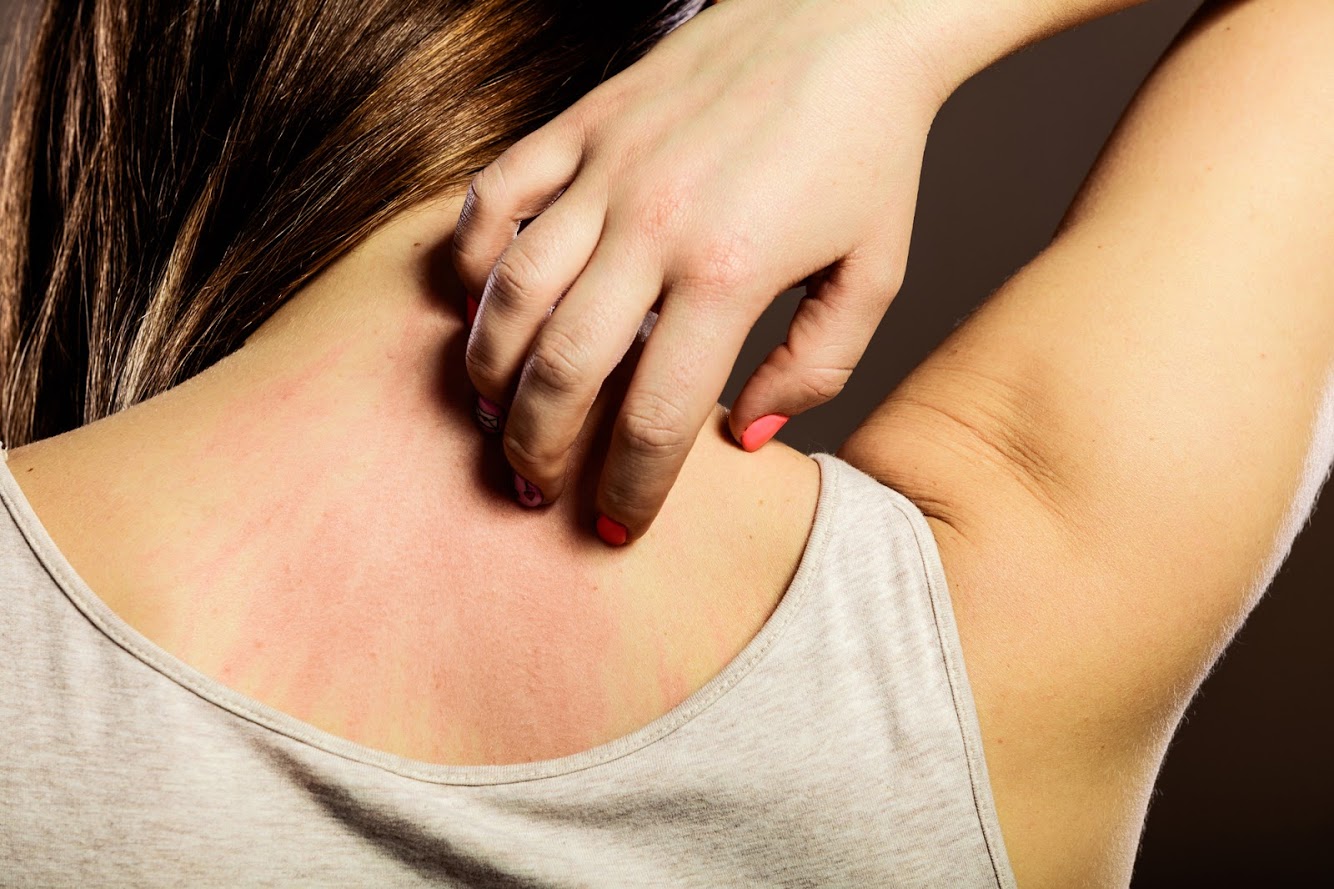Could Your Recurring Rash Be an Allergic Reaction?

Is Excessive Sweating Harming Your Career Prospects?
September 29, 2018
Can Phototherapy Get Your Eczema Under Control?
March 29, 2019A rash or a patch of irritated skin is the sort of problem that people sometimes ignore. Unless it’s particularly uncomfortable or seems to be sticking around for a long time, you might not be too worried about the occasional bit of redness, itching or burning.
The problem with this is that there’s a cause for every rash. If you don’t know what that reason is, it’s hard to know if the condition is going to get worse or how to address it.
One common cause of irritating rashes is an allergy. Allergic contact dermatitis means something touching your skin is causing an allergic reaction. Once you know what causes that reaction, you can take measures to avoid it. If any of the following things apply to your rash, it could be the result of an allergy.
The Rash Is Red or Dry
The appearance and precise symptoms of allergic contact dermatitis can vary from one person to the next, but there are some particular things to watch out for.
In mild cases, the redness can be quite subtle and is often accompanied by a dry texture and persistent itching. More severe allergies or prolonged exposure to the allergen can also cause a burning sensation, blisters and darkening of the skin.
Other symptoms, like pain and cracked skin, may mean your rash is less likely to be an allergic reaction. However, it’s still something worthwhile getting checked out.
The Rash Is Localised
Because allergic contact dermatitis is caused by the skin coming into contact with an allergen, the rash is normally localised to a particular area of the body. The area might be the face if the reaction occurs because of a cosmetic product, the neck area if it occurs because of metal in jewellery or the hands if it occurs because of something you’ve picked up.
Sometimes, the shape and position of your rash can be a clue as to what the cause is. For example, a particular metal in your watch strap can cause a red band around the skin of your wrist. Of course, if it’s your laundry detergent or a body lotion, the rash is likely to be less localised, so lack of localisation doesn’t necessarily rule out an allergic reaction.
The Rash Disappears and Reappears Often
A contact dermatitis rash occurs after you’ve come into contact with an allergen, so it will probably come and go, or at least vary in severity at different times. Assuming you’re touching the allergy-causing item fairly often, the rash will continue to reappear or get worse after it seems to be healing. In many cases of allergic contact dermatitis, you only need to come into contact with the allergen once every five days in order to persistently have the rash.
You might not always notice the rash fading and coming back unless you’re paying close attention because allergic contact dermatitis symptoms can last anywhere for quite a while after contact.
The Rash Doesn’t Have an Obvious Cause
When your rash is caused by an allergic reaction to something touching your skin, you may think the cause should be obvious. Unfortunately, contact dermatitis rashes don’t normally appear until a day or two after contact has occurred, by which point you’ll find it difficult to recognise the link between the rash and the allergen.
This trait differentiates contact dermatitis from other rashes, which you might get after exposure to an irritant or during periods of illness.
The Rash Reoccurs in a Predictable Pattern
Although there’s a delay between contact with an allergen and the rash appearing, it’s still likely to follow some sort of pattern. Perhaps you only notice it at weekends or when on holidays.
Contact with allergens can follow a pattern according to your routine and activities, so the dermatitis will too, even when you take the delay into account.
If you think you might be suffering from allergic contact dermatitis or have a rash you can’t explain, contact us for an appointment. We can perform a patch test to try to determine which substances you’re allergic to and help you get the problem under control.


